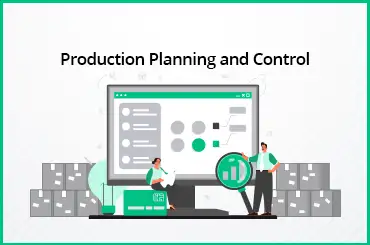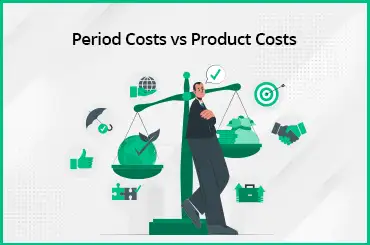Effective shop floor planning, including well-designed layouts, facilitates efficient monitoring of activities on the shop floor. The shop floor serves as the physical space where manufacturing or assembly operations take place, employing either skilled manual labor or advanced automated technologies.
Thus, managing the shop floor entails overseeing activities at the heart of production. Let's explore the concept of shop floor planning and its potential benefits for your SME manufacturing business.
The Basics of Shop Floor Planning
The administration of your operations, inventories, tools, and staff is all part of shop floor planning. Here are the three stages of your shop floor's planning and control:
- Order Release
- Order Scheduling
- Order Progress
Phase 1 - Order Release
The manufacturing order that has to be created can be determined from the master production schedule using shop floor software. The order release document will then be used to brief the shop floor management boards on the materials and procedures required to fulfill the order.
Phase 2 - Order Scheduling
Once the order release has been prepared, shop floor software provides a comprehensive process analysis of the manufacturing path that the order will pass through. At this stage, the following aspects are discussed:
- Stations where orders are processed
- The required supplies, both in terms of materials and quantity.
- This clarifies for both management and staff the tasks at hand, as well as the responsibilities and procedures associated with completing them.
Phase 3 - Order Progress
The production order and other manufacturing processes are tracked using shop floor scheduling boards. This stage provides you with summaries of:
- Complete data about manufacturing orders that are in waiting, in progress, and complete
- All personnel now working, in the process of working, or previously working on an order
Factors to Consider While Planning Your Store Layout Design
The following section will help you understand the factors that will lead you to a successful store layout design:
Finalize the store's layout
Stores of all sizes follow a handful of standard shop layout ideas, including the grid, loop, mixed, diagonal, angular, and others. You need to think about the available area, the type of atmosphere you want to cultivate for customers, and the merchandise you offer while creating the layout. Grid designs are popular in supermarkets because they are intuitive and simple to use. However, fashion retailers frequently employ cutting-edge, visually appealing store designs to showcase their wares and attract customers.
Take into account foot traffic and customer habits
Your store's layout has a significant effect on the movement of customers through the store. Designing for a pleasant shopping experience requires avoiding the introduction of any potential sources of discomfort. For example, ensure that the aisles and storefronts are broad enough so that customers don't have to bump shoulders.
Understand your store's product range and category roles
Designers of store layouts might do well to familiarize themselves with the sizes and types of goods sold by merchants. Only then, can they strategically plan the store's layout to provide each product the room it deserves. Products at a store with a high volume should be sorted into their respective categories before being put on the shelves. Otherwise, there won't be enough room for stock on the shelves, and the whole arrangement would fall apart.
Use smart product placement for maximum exposure of aisles
Place things such that they attract customers and encourage them to make a purchase. Using historical sales information, you may determine which goods are your store's best sellers and showcase them prominently to attract customers' attention to your other offerings. In addition, designate a spot to feature seasonal and limited-edition products; doing so will catch the eye of customers and encourage them to buy.
Major Benefits of Shop Floor Management
Some advantages of managing the shop floor effectively, preferably with software, are listed below.
Free Flow of Data
Your company's success can be aided by the effective flow of information. A software's ability to manage this well increases data transmission rates and precision. The software helps you take command of the supply chain as a whole and provides real-time data and insights. In addition, you get to pick and choose whatever aspects of the manufacturing process need your attention.
Cost-Effective
Modern technological solutions are more effective at finding problems than older, outmoded manufacturing processes that rely on manually input data.
A shop floor solution helps pinpoint problem areas in order to boost efficiency. Project managers may reclaim this time and devote it to other important tasks if the procedure is automated. The bottom line improves, and it's possible to cut costs.
Transparency
With expert shop floor management, access to real-time data, project intelligence, and information about the supply chain is simple. As a consequence, your team will work harder and be more dedicated to the cause. In addition, being transparent and honest about your business helps its image when data is presented accurately. The abundant data provided by the floor management dashboard means your team will have no trouble pinpointing issues and finding solutions. It also decreases reaction times significantly.
Factually Correct Data
Information in real-time is essential for the manufacturing process as a whole, including the production flow, supply chain management, and other divisions. The management on the factory floor keeps tabs on the whole manufacturing process and feeds that data into the decision-making process in real time.
Timely Group Support
The supervisors working on the factory floor seek to provide timely support to the various departments. With this system in place, executives can more easily share information and work together to find solutions.
The 'operational blindness' that may exist in firms can be eliminated by the combined efforts of several departments, and this is what technology is designed to do. This is a potential for significant time and financial savings.
Enhanced Methodology
One of the benefits of shop floor control is that it may be used to identify inefficient production methods. More training for your shop floor workers or the introduction of innovative technology to save costs and maximize efficiency can help in these areas.
Maintaining process improvement on the factory floor can be difficult since workers tend to rely on old, inefficient habits. Using shop floor control systems, managers may track production in real time and check for proper process adherence.
Fewer Errors
With proper management and real-time connectivity in place, information can move quickly and easily across the shop floor. The production manager and other important decision-makers can keep tabs on daily activities and maintain full command of the supply chain because of the rapid and open flow of information.
Error rates reduce, and consistent, effective use of best practices follows as a natural byproduct of this focus on continuous improvement.
Cost and Waste Reduction
When production cycles are optimized, businesses immediately see a drop in waste and overhead costs and a subsequent increase in profits.
This is made feasible by increased productivity and decreased mistake rates throughout the manufacturing process, leading to the achievement of key performance indicators (KPIs).
Rapidly Reduces Wasted Time
With automated, real-time access to key supply chain data via a floor management dashboard, project managers can swiftly make decisions supported by data.
This frees up a great deal of time for project managers, who can then devote themselves to other equally important duties. The enhanced management of the factory floor is only one of the many positive side effects.
How Can You Better Organize and Regulate Operations on the Shop Floor?
The time and effort spent on spreadsheets or a Kanban board for manufacturing shop floor planning and control can instead be better spent elsewhere. Cloud-based manufacturing software allows for efficient control of the factory floor.
Automation
By increasing the precision of your shop floor management, automated manufacturing processes help you increase efficiency and save time.
Collecting Data
With the help of modern technologies, you may gather comprehensive information on the manufacturing activities taking place on the shop floor.
Scheduling
Automated production scheduling can help you save time and effort by seamlessly allocating materials and resources to manufacturing orders.
Tracking
Get a birds-eye perspective of the whole factory floor and monitor:
- Stock from the warehouse to the sales floor
- Production cycle arrangement
- Keep an eye on the floor workers' progress.
Executing Your Shop Floor Plan
Every storefront is distinct and calls for customized solutions in order to function at peak efficiency. Nonetheless, there are guidelines you may follow when creating your store layout, no matter your industry, the size of your space, or where your store is located:
Use store layout design software
Outlining the proper equipment requirements may make a significant difference in how closely your plans match the actual outcome. There are many different types of store layout software available, ranging from simple drag-and-drop programs. They offer pre-made templates to advanced 3D visualizers with integrated communication and collaboration features.
Color psychology can drive shopper behavior
Choosing the proper colors for a retail store is just as important as selecting the right layout when it comes to influencing customer purchases. For instance, the color red is striking and arresting, yet it should be used sparingly by designers to have maximum effect. In contrast, blue is the intellectual opposite; it is soothing to the mind and is associated with higher thought.
Include simple adjustment mechanisms
Maintaining customers' interest across several visits requires novelty, yet it may not be practical to completely revamp your shop floor design every few months. Instead, incorporate simple elements into your shop floor layout that allow for fast but efficient modifications without costly renovations.
Best Practices for Shop Floor Control in Manufacturing
Management of operations that is both efficient and effective begins on the factory floor. Therefore, efficient shop floor management is crucial to manufacturing operations. Let's look at some of the best practices of shop floor control for the manufacturing industry:
Create Reliable Data Sources
Shop floor control is an integral part of order planning, capacity planning, scheduling, materials logistics, releasing production orders, and other operational management tasks. It demands capturing the relevant data in the right context because it allows operations to be controlled by data rather than chance. The best manufacturers use data analysis dashboards to identify areas for growth and then act on those discoveries.
Improved Materials and Resource Scheduling
Faster production and delivery are in high demand, but doing so in a complicated supply chain environment necessitates quick decision-making. Control on the shop floor relies on timely communication of relevant data to the appropriate personnel.
However, providing data is just part of the solution. Managers on the factory floor must also be able to spot irregularities and out-of-control procedures, and they must be led to the insights they need to address any problems that arise.
Out-of-plan circumstances can be reported by data automation systems like ERP software using digital operational data and control features. Most crucially, they can warn of impending quality and delivery issues caused by a lack of essential materials and resources. Managers can prevent catastrophic shop floor failures with the use of shop floor monitoring systems.
Digitize Processes on the Shop Floor
Historically, manufacturers have handled shop floor control with manual methods like spreadsheets and data collecting. Such procedures are, at best, retroactive, providing managers with obsolete data from the past that is useless for real-time and data-driven decision-making.
Manufacturers that want to remain competitive and satisfy consumer needs must embrace digital transformation by digitizing processes, automating repetitive procedures, and consolidating data from several sources into a single repository from which actionable insights can be drawn.
Optimize Your Manufacturing Shop Floor Processes With TranZact
Modern management techniques can only be successfully used if the shop floor is well-managed. Therefore, both employees and management must be enthusiastic about taking part in order to establish effective shop floor management.
SME manufacturing businesses must adopt a modern cloud ERP software like TranZact that can support them in enhancing communication rather across the shop floor easily. TranZact helps businesses to think more strategically with minimized manual effort and enables effective, data-driven communication to enhance everyday operations across sales, purchase, inventory, and production functions!
FAQs on Shop Floor Planning
1. What is shop floor planning?
Shop floor planning refers to the process of organizing and optimizing the physical layout and operations within a manufacturing facility, considering factors such as workflow, equipment placement, material handling, and safety measures to enhance productivity and efficiency on the shop floor.
2. How do I make a shop floor layout?
To create a shop floor layout, and analyze the production process flow, space requirements, and equipment requirements in alignment with safety regulations. Designate specific areas for different operations, and ensure a logical sequence of activities, for smooth material flow and minimal movement.
3. What is shop floor production?
Shop floor production encompasses all the activities involved in the manufacturing or assembly of goods on the shop floor, including material handling, machine operations, quality control, and coordination between workers and machines. It involves the effective utilization of resources, adherence to production schedules, and implementation of best practices to achieve timely and efficient production.
4. How to manage a shop floor?
Managing a shop floor involves overseeing the daily operations, coordinating personnel, monitoring production targets, and ensuring a smooth workflow. It requires effective communication, scheduling, and coordination to optimize resources and minimize downtime.















